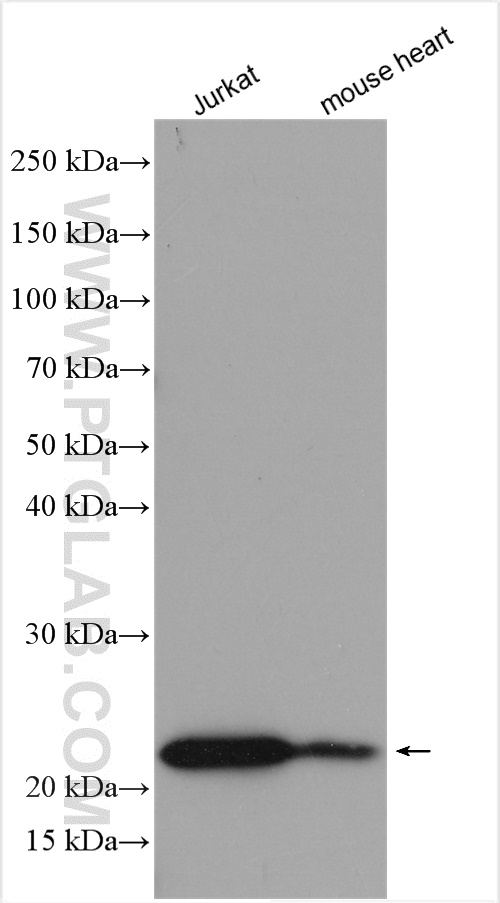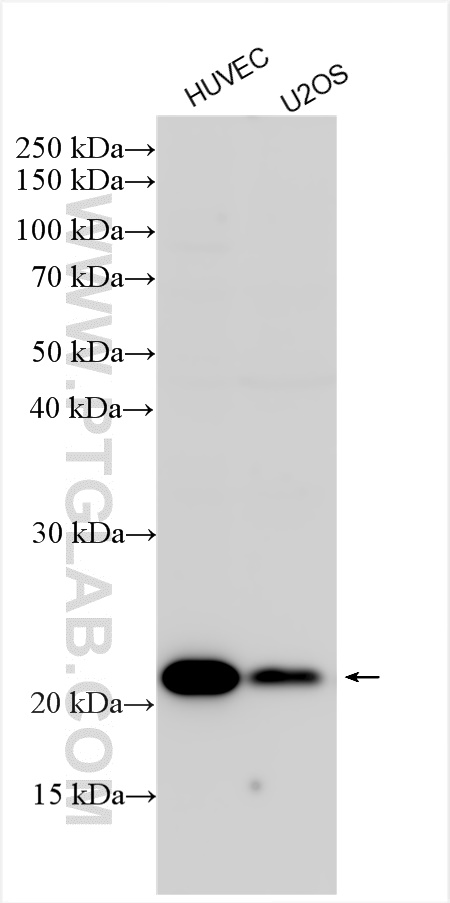验证数据展示
经过测试的应用
| Positive WB detected in | Jurkat cells, HUVEC cells, mouse heart, U2OS cells |
| Positive IHC detected in | human ovary cancer tissue Note: suggested antigen retrieval with TE buffer pH 9.0; (*) Alternatively, antigen retrieval may be performed with citrate buffer pH 6.0 |
推荐稀释比
| 应用 | 推荐稀释比 |
|---|---|
| Western Blot (WB) | WB : 1:1000-1:4000 |
| Immunohistochemistry (IHC) | IHC : 1:50-1:500 |
| It is recommended that this reagent should be titrated in each testing system to obtain optimal results. | |
| Sample-dependent, Check data in validation data gallery. | |
产品信息
14747-1-AP targets SDF2 in WB, IHC, ELISA applications and shows reactivity with human, mouse samples.
| 经测试应用 | WB, IHC, ELISA Application Description |
| 经测试反应性 | human, mouse |
| 免疫原 | SDF2 fusion protein Ag6480 种属同源性预测 |
| 宿主/亚型 | Rabbit / IgG |
| 抗体类别 | Polyclonal |
| 产品类型 | Antibody |
| 全称 | stromal cell-derived factor 2 |
| 别名 | Stromal cell-derived factor 2, stromal cell derived factor 2, SDF-2 |
| 计算分子量 | 23 kDa |
| 观测分子量 | 23 kDa |
| GenBank蛋白编号 | BC000500 |
| 基因名称 | SDF2 |
| Gene ID (NCBI) | 6388 |
| RRID | AB_2918037 |
| 偶联类型 | Unconjugated |
| 形式 | Liquid |
| 纯化方式 | Antigen affinity purification |
| UNIPROT ID | Q99470 |
| 储存缓冲液 | PBS with 0.02% sodium azide and 50% glycerol , pH 7.3 |
| 储存条件 | Store at -20°C. Stable for one year after shipment. Aliquoting is unnecessary for -20oC storage. |
背景介绍
SDF-2 is a small protein of 211 amino acids that is ubiquitously expressed in lung, breast, colon, liver and kidney. SDF-2 is localized in the ER and has been reported to get involved in multiple endoplasmic reticulum (ER) functions, including the misfolded protein catabolic process, protein glycosylation, and ER protein quality control.
实验方案
| Product Specific Protocols | |
|---|---|
| WB protocol for SDF2 antibody 14747-1-AP | Download protocol |
| IHC protocol for SDF2 antibody 14747-1-AP | Download protocol |
| Standard Protocols | |
|---|---|
| Click here to view our Standard Protocols |


